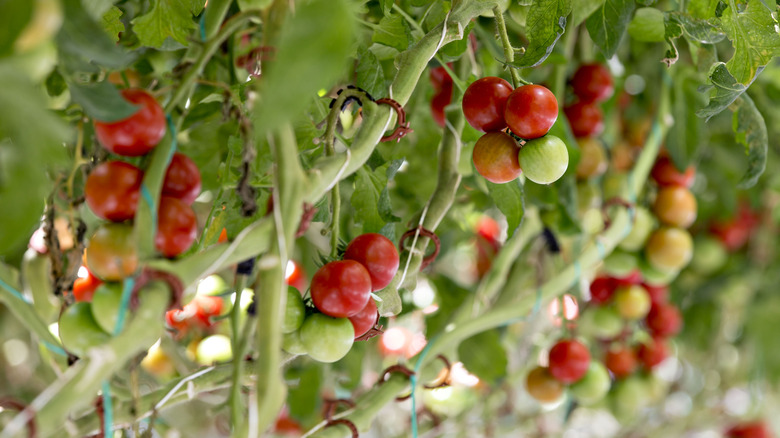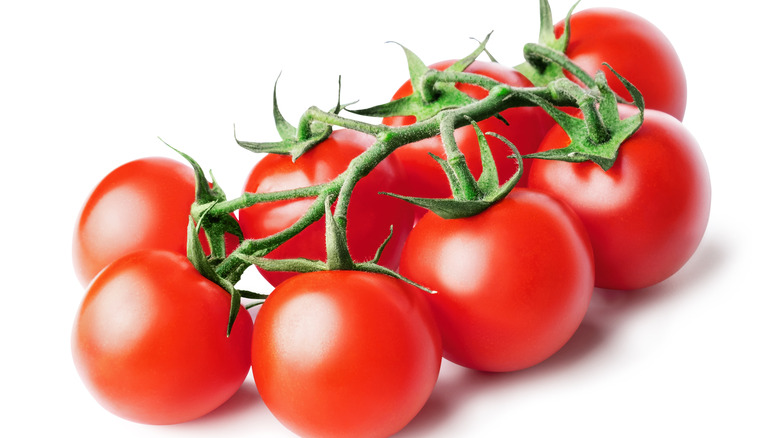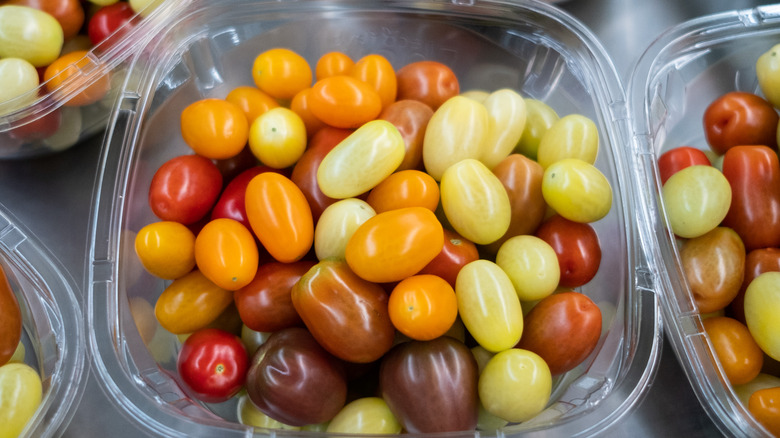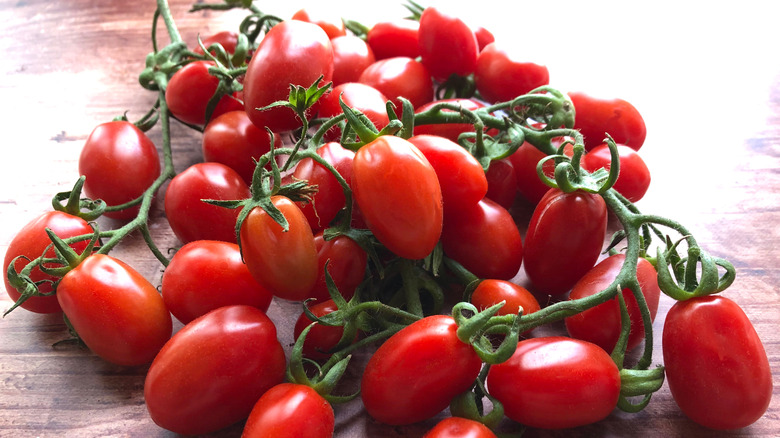Cherry Vs. Grape Tomatoes: How Are They Different?
If you're one of those people who goes to a farmer's market and gets overwhelmed by the choices, you are not alone. We all know apples have so many shapes, sizes and flavors they can make your head spin, but did you know tomatoes work the same way? Some of the most popular tomato flavors, according to Tomato Dirt, include the Better Boy, Big Beef, Celebrity, a slew of heirlooms, and of course, grape and cherry tomatoes.
And when some of them look so darn similar, it can be really hard to sift through and choose the best tomato to suit your needs. Although, the free samples definitely help. While not a rundown of every tomato on the market, we can do our best to solve one of the most prevalent tomato debates: are cherry tomatoes and grape tomatoes the same? And if not, how do you tell the difference and choose the one that's best for you?
What is a cherry tomato?
Let's go in alphabetical order and talk cherry first. According to Burpee, cherry tomatoes are "pearly round or plum-shaped" (like cherries) and come in "tangy or sweet" flavoring and shades ranging from red to golden. While some people believe the process of growing them is a bit too difficult to justify given their size, Fine Gardening notes these little tomatoes have an impressive ability to "hold their good taste well past the end of the season." If you've ever bought fresh produce, you know that is no easy feat.
For the green thumbs out there, know that cherry tomatoes tend to crack in extreme temperatures ("below 40°F or so," Fine Gardening notes). So what's the best way to use these fruits? Fine Gardening suggests that because of their deep flavors, they can be substituted for pretty much any dish in which you'd use regular tomatoes, even sometimes providing enough meatiness for full tomato sauces.
What is a grape tomato?
What makes a grape tomato different, if anything? According to Gardening Channel, grape tomatoes tend to be even smaller in size than cherry tomatoes, with an oval or "egg-like" shape to them — similar, as you may have guessed, to a grape's size and shape. Part of their appeal, according to The Kitchn, is their shelf life. They have "meatier" flesh and less liquid than cherry tomatoes and those attributes, combined with their thick skin, allow them to last past what is normally prime for the fruit.
Food Republic's chef contributors feel that cherry tomatoes have a sweeter, better flavor, but note that due to their durability, grape tomatoes tend to be easier to find. National Gourmet Institute chef Rich LaMarita suggested to Southern Living that they're best utilized in dishes like salads and kebabs, but also work in "quick sauces" and even lend themselves to roasting. So come barbecue season, grab some grape tomatoes and fire up that grill!
When To Use Each
As Chef Shane Lyons of Distilled New York told Food Republic, "I would choose cherry tomatoes over grape tomatoes any day." So safe to say there is definitely a difference beyond just shape. While the grape varietal may be less preferential, its hardened skin allows it to travel to supermarkets better than its more enticing counterpart.
When cooking, Food Republic's chef contributors say that cherry tomatoes tend to be better in something like "a light, fresh sauce vierge," adding that they are "a perfect accompaniment for grilled fish." On the other hand, the best use they find for grape tomatoes is "as a garnish for a burger or in a quick, thick sauce on top of pasta".
According to Nature Fresh, none of these choices are really based on nutrition though. The nutritional value of the two tomato types is "very comparable," the site explains, with the best of those benefits being lycopene, vitamin A, and vitamin C.
So is there a clear winner here? Maybe not. It seems to be a matter of preference, but at least now you can make an informed choice based on what's best for you!



